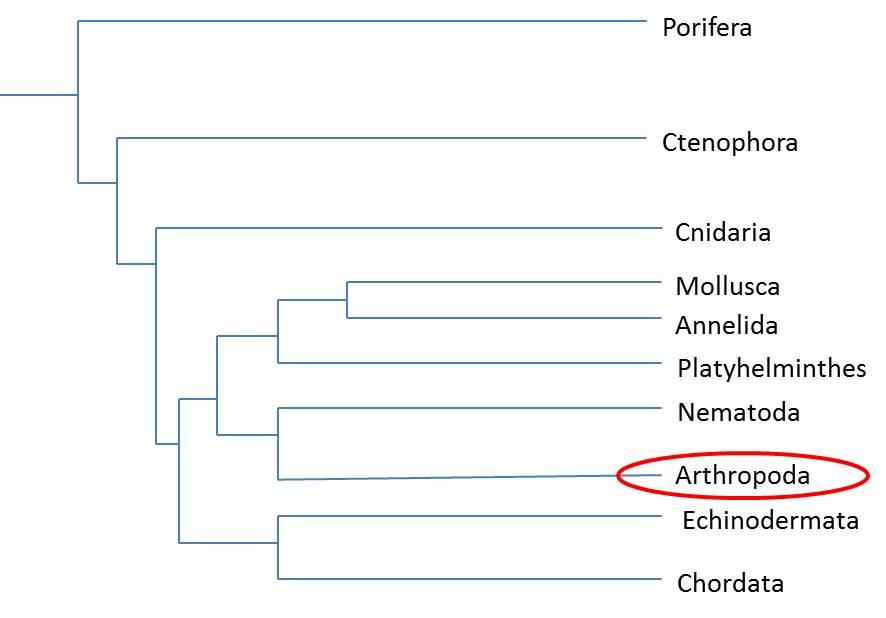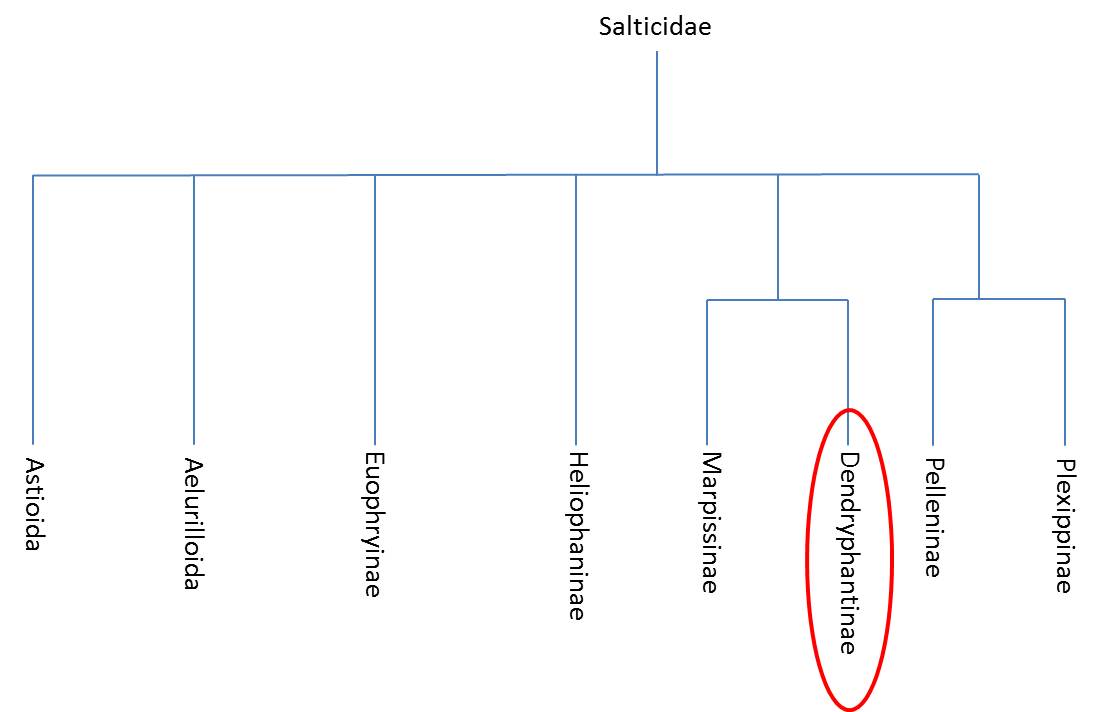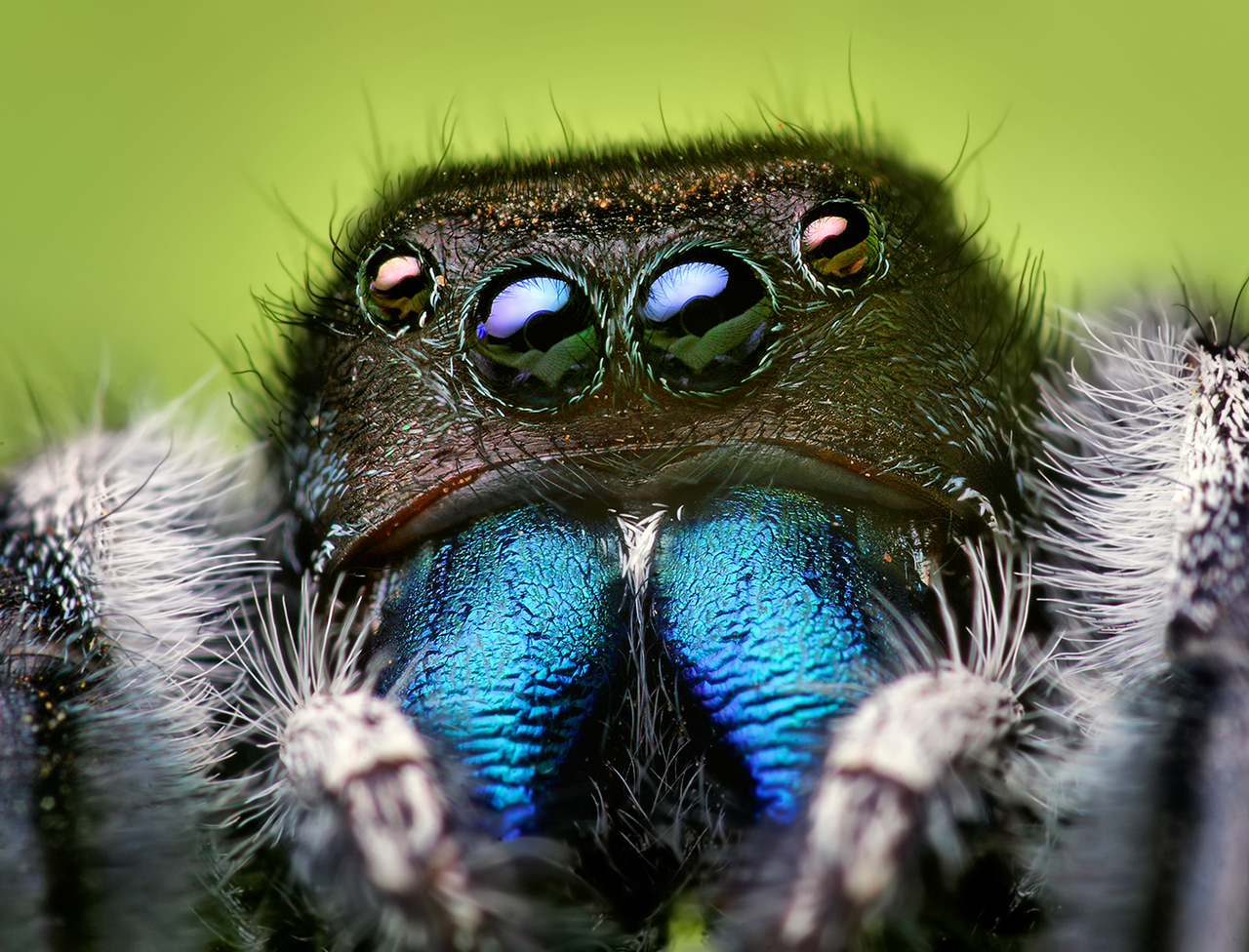Classification
Domain: Eukarya
This domain consists of organisms that have cells containing a
nucleus and membrane bound organelles. Bacteria and Archaea
domains are prokaryotes, without nuclei.
Kingdom:
Animalia
This kingdom consists of organisms with reproductive cells that
have one reproductive flagella . Also, lack cell walls, are multicellular, and heterotrophic.
. Also, lack cell walls, are multicellular, and heterotrophic.
Phylum:
Arthopoda
This phylum is the most diverse and abundant phylum of animals.
About 2 to 10 million species are classified as Arthopoda. All
organisms have an exoskeleton made of chitin. They also have
jointed appendages, and are coelomate, or an open circulatory
system.
Class: Arachnid
About 75,000 species are classified as Arachnids, most being
spiders. Arachnids are usually carnivorous, preying on insects,
and are terrestrial. They contain four sets of legs and lack
wings and antennae.
Order: Araneae
Organisms in the Araneae order prey on other organisms, usually
insects. Most have eight simple eyes, but some have less or none
at all. All spiders can make silk allowing them to spin a long
strand of silk behind them.
Family:
Salticidae
This is considered the jumping spider family. This family
contains more than 500 genera and about 5000 species making it
the most diverse family of spiders, containing about 13% of all
species. Jumping spiders have the best vision among
invertebrates. Most species are capable of very agile jumps
either for hunting, or in response to sudden threats. They use
both their book lungs and tracheal system for respiration. All
jumping spiders have four pairs of eyes, with large median eyes.

Genus: Phidippus
Phidippus' subfamily is dendryphantinae.
The genus Phidippus contains some of the largest
species of jumping spiders. Many have bright iridescent
chelicerae. Phidippus is distributed almost exclusively
in North America. There about 60 species in this genus.
Species: Phidippus audax
These species are common in North America but have been
introduced to Hawaii and the Nicobar islands. Often these
species are referred to as the daring, or bold, jumping spider.
The chelicerae of the species is often metallic green or blue
(if you look at the heading picture its easy to spot what it is).
This species is black, and their abdomen is striped and contains
a patter of spots. These spots are orange in juveniles, as the
spider matures they turn white.
Well that's pretty cool! I bet you'd love to know if you'll find
these guys outside your front door, right? Well
here is a little about where they
live.
